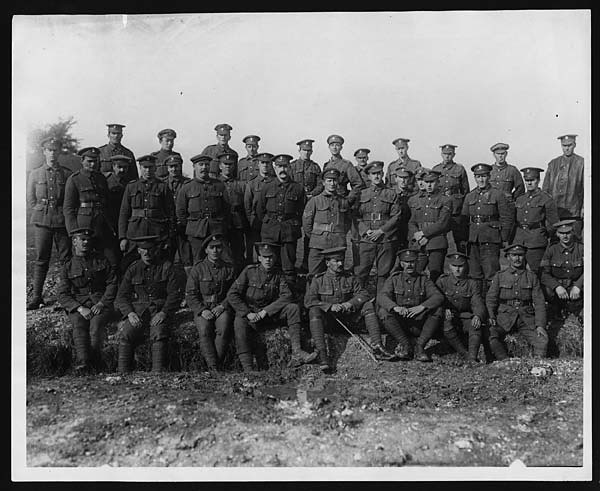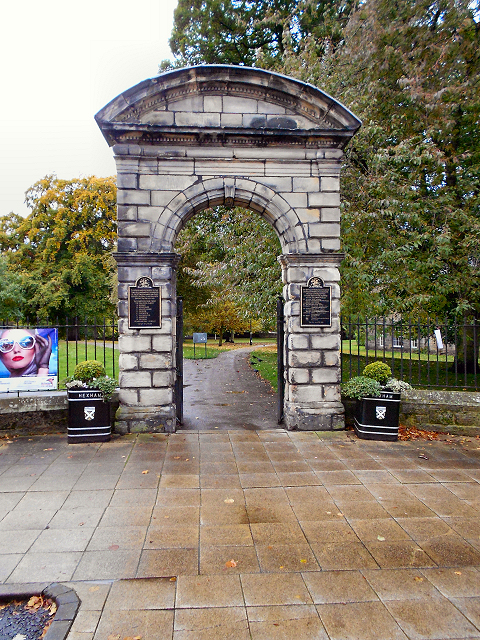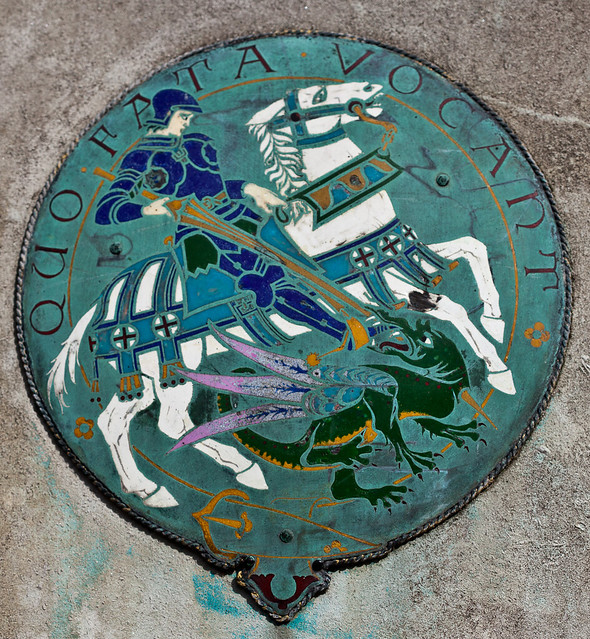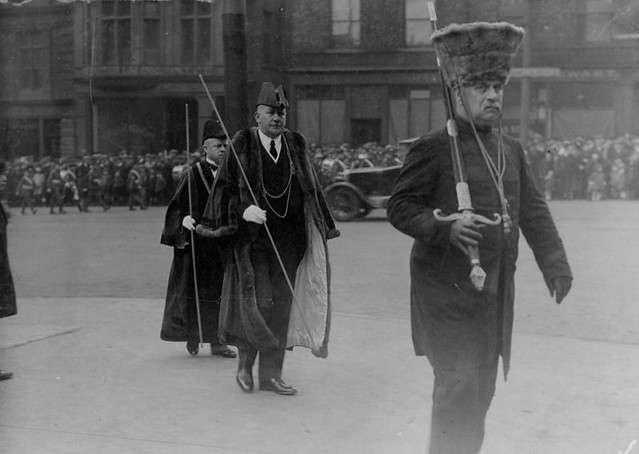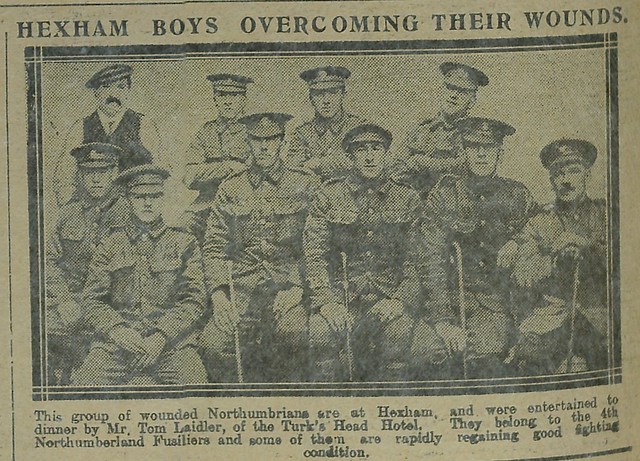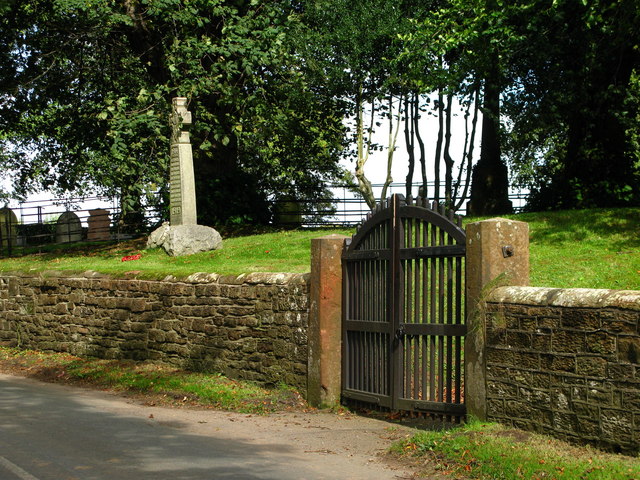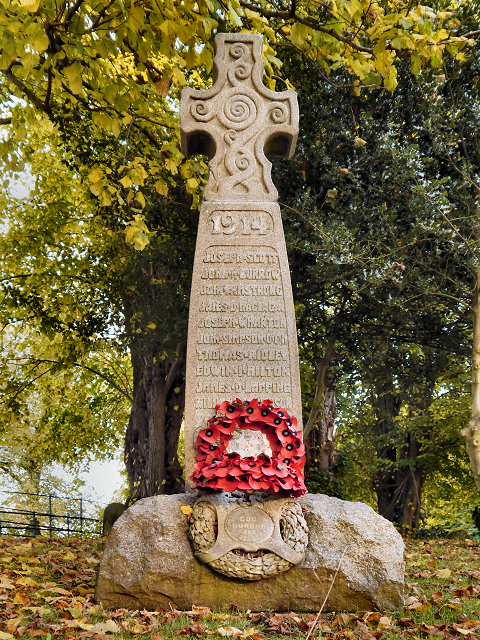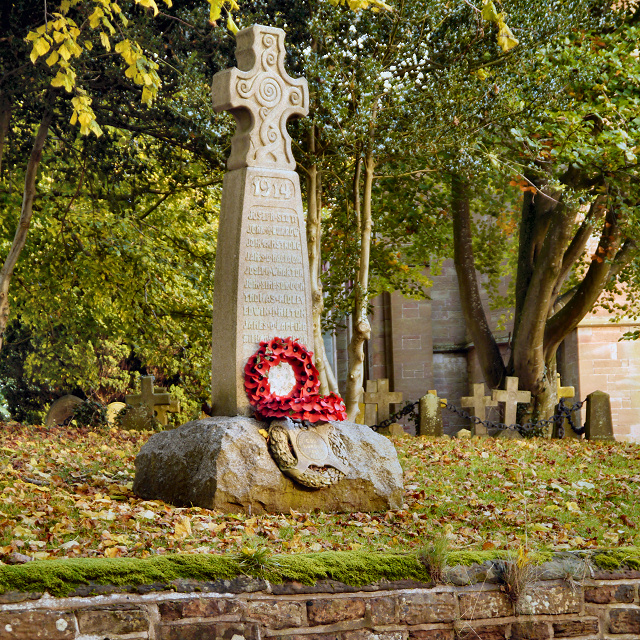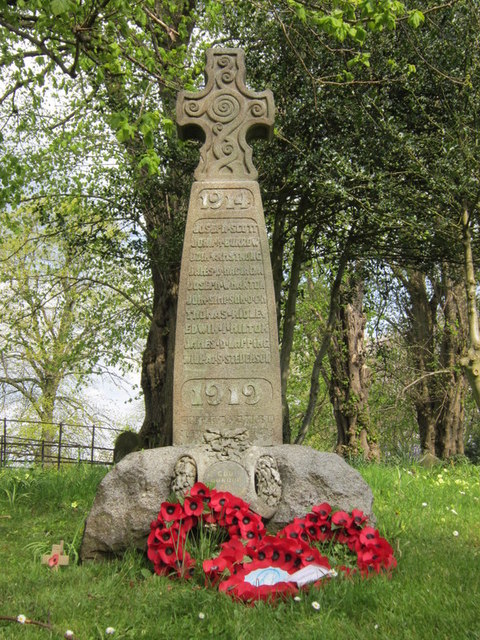Topics > Industry and Work > Armed Forces > Northumberland Fusiliers
Northumberland Fusiliers
The Royal Northumberland Fusiliers was an infantry regiment of the British Army. Originally raised in 1674 as the 5th Regiment of Foot, it was given the regional designation 'Northumberland' in 1782 and granted the distinction of being a Fusilier regiment in 1836, becoming 5th (Northumberland Fusiliers) Regiment of Foot. The regiment adopted the title Northumberland Fusiliers when regimental numbers were abolished under the Childers Reforms of 1881 and became the Royal Northumberland Fusiliers on 3 June 1935.
In 1968, the Royal Northumberland Fusiliers, after service in many wars, including both World War I and World War II, were amalgamated with the other regiments in the Fusilier Brigade–the Royal Fusiliers (City of London Regiment), the Royal Warwickshire Fusiliers and the Lancashire Fusiliers–to form the present Royal Regiment of Fusiliers.
History
Origins
The regiment was originally part of the Dutch service and known as the Irish Regiment, or Viscount Clare's Regiment, under the command of Daniel O'Brien, 3rd Viscount Clare. In the following year the colonelcy passed to John Fenwick and the "Irish" designation was discontinued and the regiment was referred to as a "Holland Regiment". The regiment was transferred to the British Service on 5 June 1685, establishing its order of precedence as the 5th Regiment of the Line. Like most other regiments, it was known by the names of the colonels who successively commanded it at the time until it became the 5th Regiment of Foot in 1751.
Nine Years War
The regiment took part in the Irish campaign of 1690–1691, and was present at the Battle of the Boyne, the Second Siege of Athlone and the 1691 Siege of Limerick. In 1692 the unit sailed for Flanders where they were to remain for five years. In 1695 they were part of the allied forces that recaptured Namur. With the ending of the war by the Treaty of Ryswick they returned to England in 1697.
War of the Spanish Succession
The regiment spent the years 1707–1713 in Spain. They were one of four English regiments who fought a rearguard action with their Portuguese allies at Campo Maior in 1709, and fought an action on the River Caia.
Anglo-Spanish War
During the Anglo-Spanish War of 1727, the regiment formed part of the garrison of Gibraltar which withheld the Spanish during the four-month-long siege.
On 1 July 1751 a royal warrant provided that in future regiments would not be known by their colonels' names, but by their "number or rank". Accordingly, Lieutenant-General Irvine's Regiment was redesignated as the 5th Regiment of Foot.
Seven Years' War
The next major conflict in which the 5th foot was involved was the Seven Years' War. The regiment took part in the Raid on Cherbourg in 1758, the Battle of Warburg in 1760, the Battle of Kirch Denkern in 1761 (where they captured the entire French Rouge regiment) and the Battle of Wilhelmsthal in 1762.
American Revolution
The 5th left Monkstown, Ireland on 7 May 1774, for Boston, Massachusetts Bay Colony. Their presence was necessary because of strong civil unrest in the area. Arriving in July, 1774 the 5th camped near the town. On 19 April 1775, the Light Infantry and Grenadier Companies participated in the march to Concord, and the resulting fighting at Lexington, Concord, and the march back to Boston. Casualties were five men killed, three officers and 15 men wounded, and one man captured. On 17 June 1775, after being under siege by American forces for two months, the regiment participated in the attack on the fortifications at Breed's Hill (the Battle of Bunker Hill).
After spending two months on board ship in Halifax, Nova Scotia, the 5th sailed to New York to participate in the effort to capture the city from the Americans. They took part in the Battle of Long Island and the Battle of White Plains, the capture of Fort Washington, New York, the capture of Fort Lee, New Jersey. They then spent the winter of 1776-1777 quartered near New York City and were involved in skirmishes with the American forces. They were then part of Howe's campaign to capture Philadelphia, being engaged in the Battle of Brandywine Creek, where they broke the Continental Army's center at Chadds Ford, capturing five cannon. On the retreat through New Jersey, on 28 June 1778, the regiment was involved in the fighting at Monmouth Court House. While in New York, the 5th participated in several raids and skirmishes, including a raid on Little Egg Harbor, New Jersey.
They then embarked from New York on 3 November 1778, for the French West Indies, landing on 13 December 1778, on the island of Saint Lucia. The 5th was engaged with a small force of French and captured a four-cannon battery. On 18 December 1778, a force of 9,000 French troops landed on St. Lucia. The small British force of 1,400 men occupied a hill located on the neck of a peninsula. The French were fairly raw soldiers trained to fight in the classic European style of linear battles. The French advanced on the British force several times. The British, veterans of colonial fighting, inflicted a stinging defeat on the French. The French lost 400 killed and 1100 wounded to the British losses of ten killed and 130 wounded, which included two officers from the 5th Foot.
After two years in the West Indies, the 5th Foot was sent to Ireland in December 1780. They were still in Ireland when hostilities between Great Britain, France, Spain, the Netherlands, and the former Colonies officially ended in 1783.
On 1 August 1782, all those regiments of the line that did not have a special title were given a county designation. The primary purpose was to improve recruiting, but no links were actually formed with the counties after which the regiments were named. The 5th became the "5th (Northumberland) Regiment of Foot": the county being chosen as a compliment to the colonel, Hugh Percy, 1st Duke of Northumberland.
Peninsula War
The regiment embarked for Portugal in July 1808 for service in the Peninsula War. The regiment fought in the Battle of Roliça and the Battle of Vimeiro in August 1808, the Battle of Corunna in January 1809 and the Battle of Bussaco in September 1810. It earned the nicknames the "Old and Bold", "The Fighting Fifth" and also "Lord Wellington's Bodyguard". It formed part of a small force which beat off an overwhelming body of the enemy at El Boden in 1811, a performance which Wellington notified to the Army as a memorable example of what can be done by steadiness, discipline, and confidence.
The regiment was in the 3rd Division, 2nd Brigade under command of Major General Charles Colville, consisting of the 1st/5th Regiment of Foot, 2nd/83rd Regiment of Foot, 2nd/87th Regiment of Foot and the 94th Regiment of Foot.
The regiment went on to fight at the Siege of Ciudad Rodrigo in January 1812, the Battle of Badajoz in April 1812 and the Battle of Salamanca in July 1812 as well as the Battle of Vitoria in June 1813. It then pursued the French Army into France and saw action at the Battle of Nivelle in November 1813, the Battle of Orthez in February 1814 and the Battle of Toulouse in April 1814.
On 4 May 1836, the 5th became a fusilier regiment and was redesignated as the 5th (Northumberland Fusiliers) Regiment of Foot:
The King has been pleased to command, that the 5th, or Northumberland, Regiment of Foot shall in future be equipped as a Fusilier Regiment, and be styled the 5th Regiment of Foot, or Northumberland Fusiliers.
The regiment, which was increased to two battalions in 1857, saw active service in the Indian Rebellion of 1857 and the Second Anglo-Afghan War in 1880.
The regiment was not fundamentally affected by the Cardwell Reforms of the 1870s, which gave it a depot at Fenham Barracks in Newcastle upon Tyne from 1873, or by the Childers reforms of 1881 – as it already possessed two battalions, there was no need for it to amalgamate with another regiment. At the same time the existing militia and rifle volunteer units of the district became battalions of the regiment. Accordingly, on 1 July 1881 the Northumberland Fusiliers was formed as the county regiment of Northumberland, (including the Counties of the towns of Newcastle upon Tyne and Berwick-upon-Tweed) with the following battalions:
Regular battalions
- 1st Battalion (formerly 1st Battalion, 5th Foot)
- 2nd Battalion (formerly 2nd Battalion, 5th Foot)
Militia battalion
- 3rd (Militia) Battalion (formerly Northumberland Light Infantry Militia)
Volunteer battalions
- 1st Northumberland (Northumberland and Berwick-on-Tweed) Rifle Volunteer Corps: renamed as 1st Volunteer Battalion in 1883
- 2nd Northumberland Rifle Volunteer Corps: renamed as 2nd Volunteer Battalion in 1883
- 1st Newcastle upon Tyne Rifle Volunteer Corps: renamed as 3rd Volunteer Battalion in 1883
The Second Boer War
The 1st Battalion formed part of the 9th Brigade together with the 2nd Northamptonshire Regiment, 2nd Yorkshire Light Infantry, and part of the 1st Loyal North Lancashire Regiment. While the 2nd Battalion sailed as corps troops, and was then brigaded with the 1st Royal Scots, and 1st Sherwood Foresters, under General Sir William Gatacre. The battalions fought in the following battles: Battle of Belmont, Battle of Graspan, Battle of Modder River, Battle of Magersfontein, Battle of Stormberg, Battle of Reddersberg, Battle of Sanna's Post and the Battle of Nooitgedacht.
Reorganisations 1900–1908
With the continuation of the war in South Africa, a number of regiments containing large centres of population formed additional regular battalions. The Northumberland Fusiliers formed 3rd and 4th regular Battalions in February 1900, when the militia battalion was relabeled as the 5th battalion. The 3rd was stationed in South Africa, and in 1902 some of the men were in Antigua to guard the Boer prisoners of war placed there. The 4th formed part of the garrison in Ireland. Both were disbanded in 1907.
The 5th (militia) battalion (known as the 3rd battalion until February 1900) was embodied in December 1899, and from February 1900 to July 1901 was stationed at Malta.
In 1908 a reorganisation of reserve forces was carried out under the Territorial and Reserve Forces Act 1907. The militia were transferred to a new "Special Reserve" while the Volunteer Force was reorganised to become the Territorial Force. The "Volunteer Battalion" designation was discarded, and territorial battalions were numbered on after those of the regular army and special reserve. The new organisation was thus:
- 1st Battalion
- 2nd Battalion
- 3rd Battalion (Special Reserve)
- 4th Battalion (T.F.) (HQ at Hencotes in Hexham, from bulk of 1st Volunteer Battalion)
- 5th Battalion (T.F.) (HQ at Church Street in Walker (since demolished), redesignation of 2nd Volunteer Battalion)
- 6th (City) Battalion (T.F.) (HQ at Northumberland Road in Newcastle, redesignation of 3rd Volunteer Battalion)
- 7th Battalion (T.F.) (HQ at Fenkle Street in Alnwick, from part of 1st Volunteer Battalion)
- 8th (Cyclist) Battalion (HQ at Hutton Terrace in Newcastle, formed 1908, redesignated Northern Cyclist Battalion in 1910 and transferred to the Army Cyclist Corps in 1915)
First World War
During the First World War, the Northumberland Fusiliers expanded to 52 battalions and 29 of them served overseas. It was the second largest infantry regiment of the British Army during the war, surpassed only by the 88 battalions of the London Regiment.
The increase in strength was done partly by forming duplicates of existing T.F. battalions, and partly by the creation of new "Service" battalions. An example of the first instance was the 4th Battalion which was renumbered as the 1/4th in August 1914 on forming a duplicate 2/4th Battalion. A 3/4th Battalion followed in June 1915.
Among the Service Battalions were the Tyneside Scottish (20th - 23rd Battalions) and the Tyneside Irish (24th - 27th Battalions), while the 17th (Service) Battalion was formed by staff of the North Eastern Railway, and was involved in railway construction.
They earned 67 battle honours and won five Victoria Crosses, but at the cost of over 16,000 dead. The battalions mostly saw action on the Western Front, but also in Macedonia, Gallipoli, Egypt and Italy.
In June 1935 George V celebrated his silver jubilee. This opportunity was taken of granting royal status to four regiments, principally in recognition of their service in the previous war.
On the occasion of His Majesty's Birthday and in commemoration of the completion of the twenty-fifth year of his reign, the King has been graciously pleased... to approve that the following regiments shall in future enjoy the distinction "Royal" and shall henceforth be designated:-
- 5th Royal Inniskilling Dragoon Guards
- The Buffs (Royal East Kent Regiment)
- The Royal Northumberland Fusiliers
- The Royal Norfolk Regiment
In 1936, the Royal Northumberland Fusiliers was one of four line infantry regiments selected for conversion to specialised Divisional (Machine Gun) or Divisional (Support) Battalions. The other regiments selected were the Cheshire Regiment, the Manchester Regiment and the Middlesex Regiment.
Second World War
The regiment expanded to ten battalions during the Second World War. Although most of them served as divisional machine gun or support battalions, some of them formed motorcycle, searchlight, tank, reconnaissance, ordinary infantry and even deception units. They saw action with the BEF in North-West Europe in 1940 and the 21st Army Group in 1944–45, North Africa 1940–43, Italy 1943–45, the fall of Singapore and the defence of the United Kingdom.
Korean War
The 1st Battalion was attached to the 29th Infantry Brigade, which had been sent to Korea to reinforce the Allied effort there. When it arrived in Korea in December 1950, the Brigade comprised:
- 1st Battalion, the Royal Northumberland Fusiliers
- 1st Battalion, the Gloucestershire Regiment
- 1st Battalion, the Royal Ulster Rifles
- 8th King's Royal Irish Hussars
- C Squadron, 7th Royal Tank Regiment, with specialised armour
- 45 Field Regiment RA
- 11 LAA Battery RA
- 170 Mortar Battery RA
- plus supporting units.
In July 1951, it was re-organized as 29th British Infantry Brigade and absorbed into the 1st Commonwealth Division.
Regimental museum
The Fusiliers Museum of Northumberland is based in Alnwick Castle.
Badges and dress distinctions
The 5th Regiment of Foot was one of the 'Six Old Corps' entitled to use their 'ancient badge' (St George killing the Dragon) on Regimental Colours, drums and other devices rather than the typical GR cipher as used by normal Regiments of the Line, a distinction first officially recorded in 1747.
In the centre of their colours was an image of St. George killing the dragon, this being their ancient badge, and in the three corners of their second colour, the rose and crown.
The regiment wore a distinctively-coloured hackle or plume on the fusilier cap and later on the beret. The hackle was red over white, and was authorised in June 1829. This replaced the white feather plume the regiment had adopted following the Battle of St Lucia in 1778, supposedly taken from the headgear of fallen French troops. The 5th Foot was the only line regiment, since the introduction of the shako in 1800, to wear the white plume (other regiments having white over red) although the right to wear it was only officially granted in 1824. In 1829 a new model of shako was introduced and all infantry regiments were to wear a white plume, with the 5th Foot given a unique plume of red over white. This became a red over white 'ball tuft' in 1835 and later became a hackle in the same colours.
Victoria Cross
The following members of the regiment were recipients of the Victoria Cross.
- James Bulmer Johnson
- Patrick McHale
- Peter McManus
- Ernest Sykes
- Thomas Bryan
- Robert Henry Cain (Attached Staffordshire Regiment)
- James Joseph Bernard Jackman
- Wilfred Wood
- John Scott Youll
George Cross
Only one member of the regiment was the recipient of the George Cross:
- Derek Godfrey Kinne
Amalgamation
On 23 April 1968, following the publication of the following notice in the London Gazette:
By virtue of the provisions of the Royal Warrant dated 5th April, 1968 (published in Army Order 18 of 1968) all officers of the Land Forces belonging to The Royal Northumberland Fusiliers (5th), The Royal Warwickshire Fusiliers (6th), The Royal Fusiliers (City of London Regiment) (7th), and The Lancashire Fusiliers (20th) are transferred to the Royal Regiment of Fusiliers with effect from 23rd April, 1968.
The regiment was amalgamated into the new Royal Regiment of Fusiliers.
Battle honours
Early wars
By 1881 the 5th foot had been awarded the following battle honours:
| Honour | Date of action or campaign | Date of grant |
|---|---|---|
| Wilhelmsthal | 1762 | 1836 |
| Roleia | 1808 | 1817 |
| Vimiera | 1808 | 1825 |
| Corunna | 1809 | 1825 |
| Busaco | 1810 | 1825 |
| Ciudad Rodrigo | 1812 | 1817 |
| Badajoz | 1812 | 1818 |
| Salamanca | 1812 | 1817 |
| Vittoria | 1813 | 1817 |
| Nivelle | 1813 | 1817 |
| Orthes | 1814 | 1818 |
| Toulouse | 1814 | 1818 |
| Peninsula | 1808–1814 | 1815 |
| Lucknow | 1857 | 1863 |
| Afghanistan 1878–1880 | 1878–1880 | 1881 |
Second Boer War
The regiment received two battle honours for the conflict: "Modder River" and "South Africa, 1899–1902".
First World War
The regiment was awarded the following 67 battle honours:
|
|
|
|
Those shown in bold print were selected to be borne on the king's colours.
Second World War
They were awarded twenty-nine battle honours:
|
|
|
|
Those shown in bold print were selected to be borne on the king's colours.
Korean War
In August 1958, the Regiment was awarded the following battle honours:
- Imjin
- Seoul
- Kowang-San
- Korea 1950-51.
Those shown in bold print were selected to be borne on the regimental colours.
In popular culture
Dr. John Watson, the friend and biographer of Sherlock Holmes in a number of stories by Sir Arthur Conan Doyle, is stated to have served with the 5th Northumberland Fusiliers in Afghanistan at the beginning of A Study in Scarlet. This aspect of the character's biography was also referenced in the BBC's contemporary adaptation Sherlock, in the episodes "A Study in Pink ", "A Scandal in Belgravia", "The Hounds of Baskerville" and "The Sign of Three".
Visit the page: Royal Northumberland Fusiliers for references and further details. You can contribute to this article on Wikipedia.
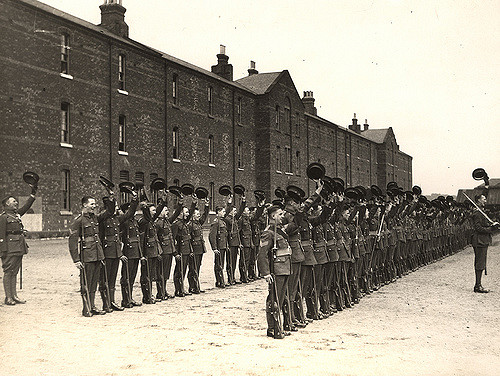
Co-Curate Page
Fenham Barracks
- Overview About Fenham Barracks Map Street View Fenham Barracks is a military installation in Barrack Road, Newcastle upon Tyne. History The site was acquired by the War Office from …
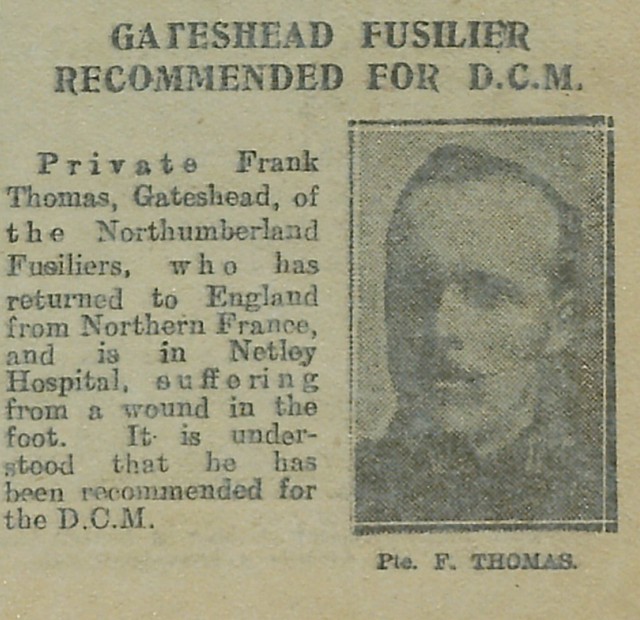
from IllustratedChronicles (flickr)
Frank Thomas - Northumberland Fusiliers - Gateshead
Pinned by Simon Cotterill
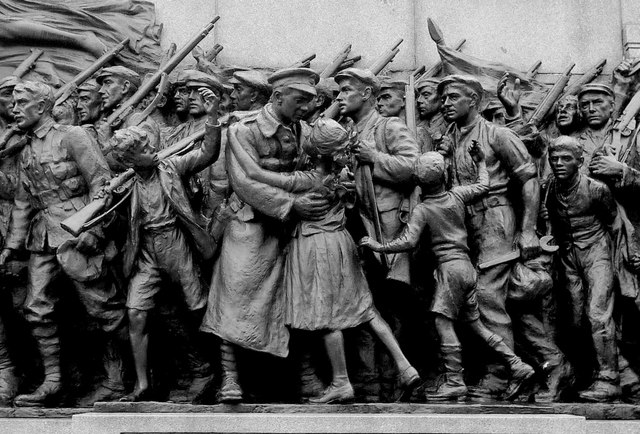
from Geograph (geograph)
'The Response', World War I Memorial, Barras Bridge (detail)
Pinned by Simon Cotterill
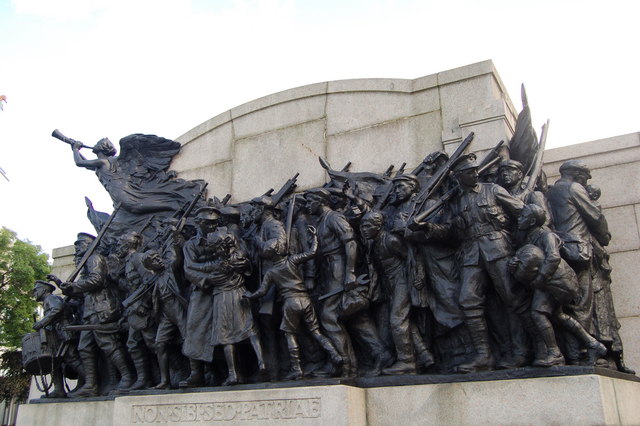
Co-Curate Page
The Response (War Memorial)
- Overview Further Information Map Street View The "The Response" is a war memorial in the gardens by Newcastle Civic Centre, off Barras Bridge. The sculpture was designed by Sir W. …
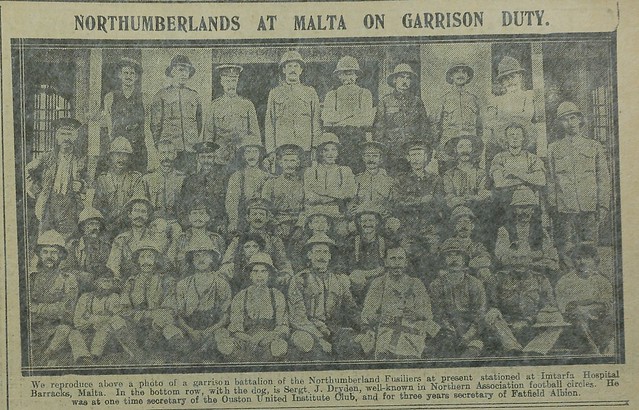
from IllustratedChronicles (flickr)
Northumberlands at Malta on Garrison Duty
Pinned by Simon Cotterill
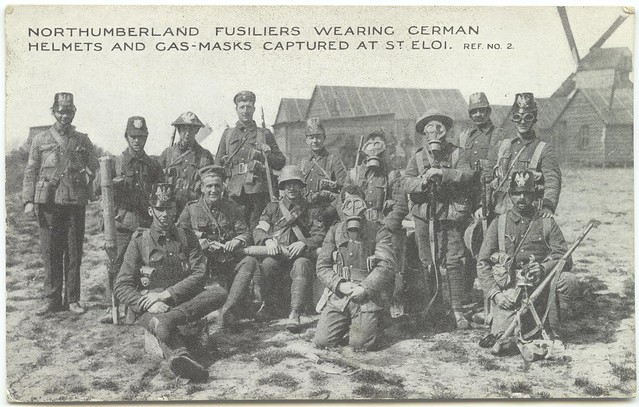
from Flickr (flickr)
Northumberland Fusiliers wearing German helmets and gas-masks captured at St Eloi. Official photograph
Pinned by Simon Cotterill
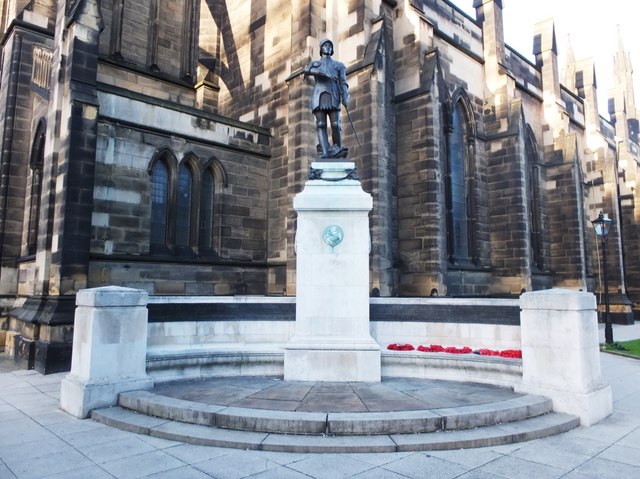
Co-Curate Page
St George Statue (war memorial) by St Thomas the Martyr
- The memorial of Portland stone with granite steps and a bronze statue of St George stands near the entrance to the Church of St Thomas the Martyr, by the corner …
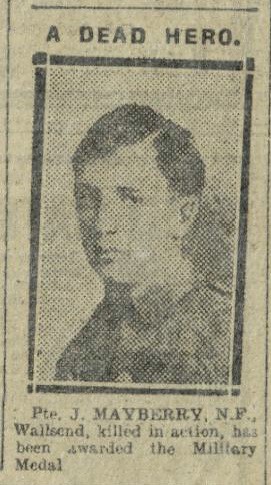
from IllustratedChronicles (flickr)
A dead hero. Pte. J. Mayberry. N.F. Wallsend killed in action. Military Medal
Pinned by Simon Cotterill


Co-Curate Page
Fenham Barracks
- Overview About Fenham Barracks Map Street View Fenham Barracks is a military installation in Barrack Road, Newcastle upon Tyne. History The site was acquired by the War Office from …

from IllustratedChronicles (flickr)
Frank Thomas - Northumberland Fusiliers - Gateshead
Pinned by Simon Cotterill

from Geograph (geograph)
'The Response', World War I Memorial, Barras Bridge (detail)
Pinned by Simon Cotterill

Co-Curate Page
The Response (War Memorial)
- Overview Further Information Map Street View The "The Response" is a war memorial in the gardens by Newcastle Civic Centre, off Barras Bridge. The sculpture was designed by Sir W. …

from IllustratedChronicles (flickr)
Northumberlands at Malta on Garrison Duty
Pinned by Simon Cotterill

from Flickr (flickr)
Northumberland Fusiliers wearing German helmets and gas-masks captured at St Eloi. Official photograph
Pinned by Simon Cotterill

Co-Curate Page
St George Statue (war memorial) by St Thomas the Martyr
- The memorial of Portland stone with granite steps and a bronze statue of St George stands near the entrance to the Church of St Thomas the Martyr, by the corner …

from IllustratedChronicles (flickr)
A dead hero. Pte. J. Mayberry. N.F. Wallsend killed in action. Military Medal
Pinned by Simon Cotterill

